The upcoming launch of the James Webb Space Telescope promises to usher in a new era of astronomy.
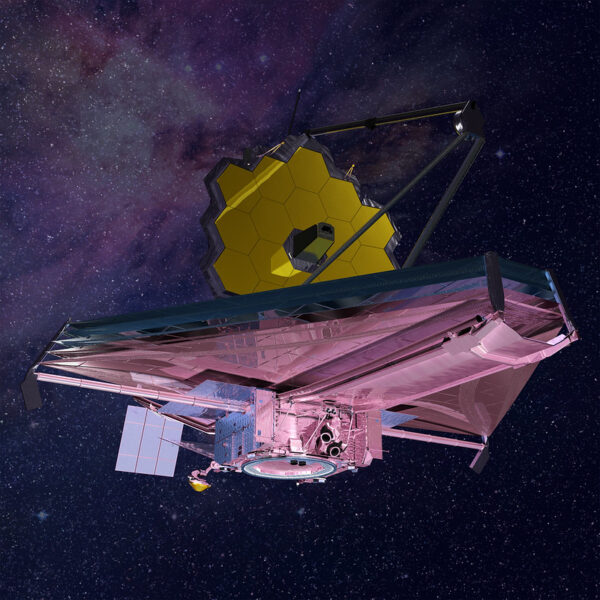
NASA
It’s getting real now. After three decades from conception through design, delays, setbacks, and threats of outright cancellation, the James Webb Space Telescope launches from the Kourou Space Center in French Guiana on a European Space Agency Ariane 5 rocket no earlier than December 24th.
It’s amazing to think: the idea of the space telescope that would become Webb was first proposed way back in 1989, before the Hubble Space Telescope was even launched. The gigantic, foldable telescope was formally proposed during the 2001 decadal survey as a near-infrared workhorse that could probe everything from exoplanetary systems to the very earliest universe.
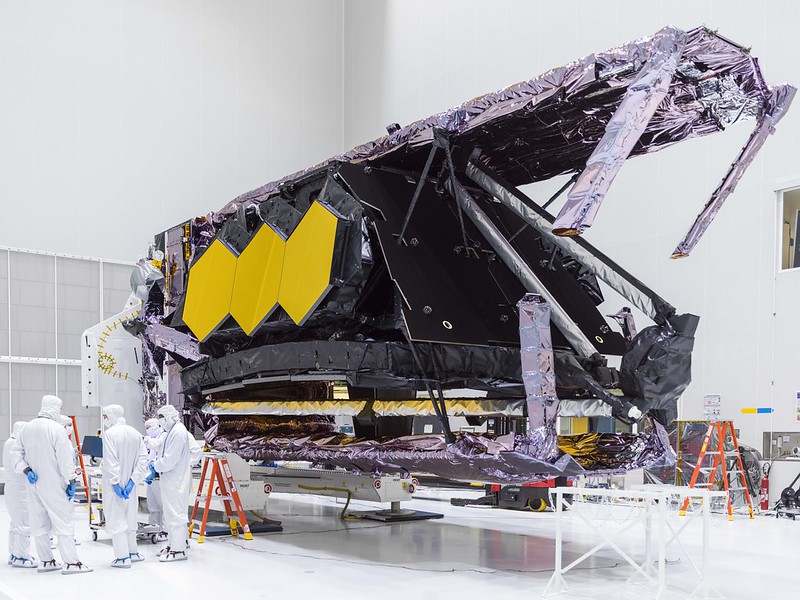
NASA / Chris Gunn
But the road to space hasn’t been easy. The project devoured nearly half of NASA’s overall astrophysics budget between 2010 and 2014, with projected costs ballooning from an initial $1 billion to an ultimate price tag of $11 billion. A Congressional proposal in 2011 almost killed the project entirely. Ultimately, NASA footed $9.7 billion of the bill, while partners in the European Space Agency kicked in $810 million and the Canadian Space Agency provided $160 million.
Now, the telescope carries with it the hopes and dreams of astronomers worldwide.
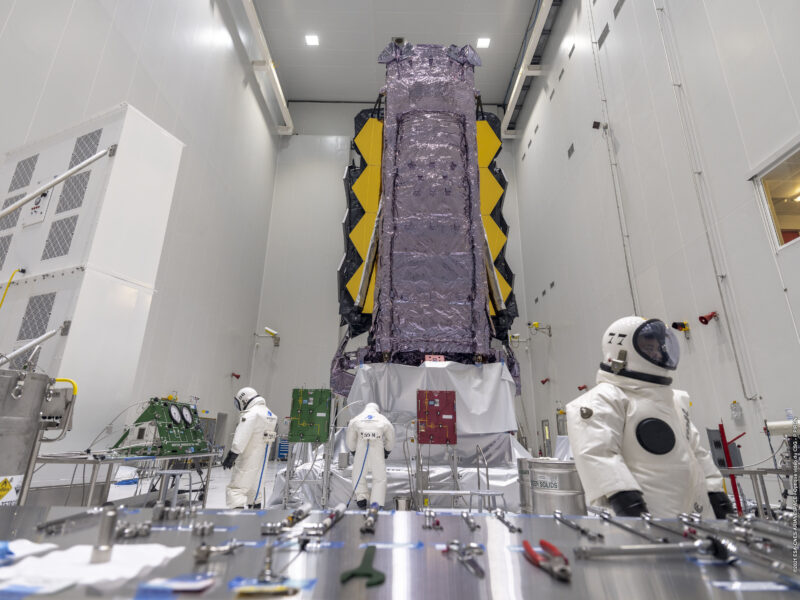
NASA
Webb is easily one of the most complex and costly telescopes ever built. Headed towards a Lissajous halo orbit around the L2 Sun-Earth Lagrange point almost 700 thousand miles beyond the orbit of the Moon, Webb is — unlike Hubble — well beyond the range of any possible repair mission. It will need to unfold and deploy its seven-layer sunshade properly the first time around.
The telescope's primary mirror, 6.5 meters (21 feet) across, is made of 18 hexagonal gold-plated beryllium segments, resulting in a telescope 100 times more powerful than the 2.4-meter Hubble. Along with the Vera C. Rubin Observatory on the ground and the upcoming Nancy Grace Roman Space Telescope, Webb promises to push forward the boundaries of modern astronomy.
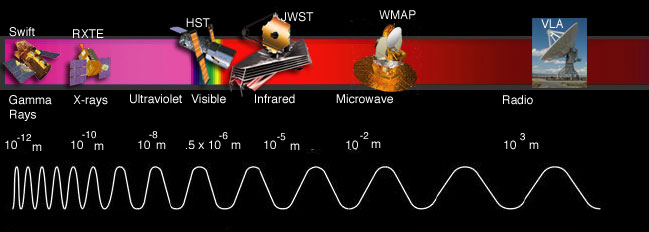
NASA
The infrared observatory is often touted as the successor to Hubble, but while Hubble observed visible light and ultraviolet photons, Webb will specialize in near-infrared wavelengths (0.6 to 28.3 microns). While some infrared wavelengths are accessible from the ground, you really need to head to space to see most of the infrared sky. While missions such as NASA’s Spitzer Space Telescope and the European Space Agency’s Hershel Space Observatory have given us a tantalizing view of the infrared universe, Webb will blow the doors wide open on this field of astronomy.
"Webb will be transformative for astronomical research, just as Hubble has been," says Heidi Hammel (NASA/GSFC). "Webb’s infrared capabilities will open up a new frontier for imaging and spectroscopy."
The Science
Webb's 10-year primary mission will address four key science areas:
- Trace the evolution of galaxy formation
- Study star and planetary system formation
- Characterize exoplanetary systems and look for possible signs of life
- Observe some of the earliest stars that formed after the Big Bang
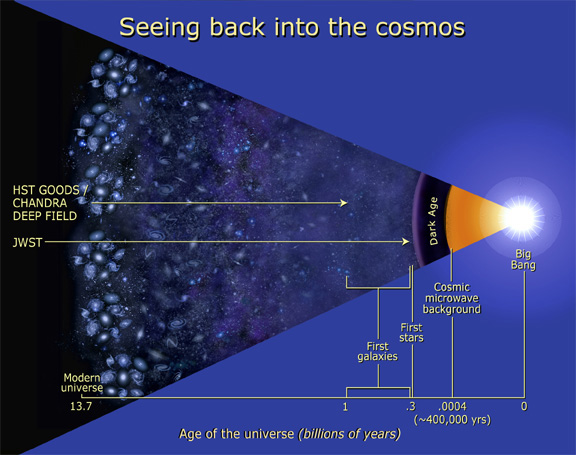
NASA
"The observations I am most excited about are those of exoplanets," says Mario Livio (University of Nevada, Las Vegas), who worked for years as part of the Hubble team. "Especially, terrestrial exoplanets that are transiting their host star in the habitable zone. My hope is that [Webb] will be able to characterize the atmospheres of some of those planets."
Graduate student Lisa Dang (McGill University) is likewise excited about the opportunities to learn about exoplanets and their atmospheres. "I'm so curious to know much better these observations are going to be and how much we will learn— we all know it's going to be a great observatory, but how great—we just don't know yet!"
Webb will take spectra of exoplanet atmospheres, enabling scientists to look for hints of water vapor, carbon dioxide, and methane on far-off worlds. Webb may also shed light on the nature of planets between Earth and Neptune in size, which though absent from the solar system make up half of all known exoplanets. Webb will even catch star and planet formation in the act, by peering into dust- and gas-shrouded nebulae.
In the case of cosmology, JWST will be able to detect redder wavelengths than any Great Observatory before it, thereby looking further back in space and time. The proposed COSMOS-Webb project, for example, aims to explore the universe 400,000 to 1 billion years after the Big Bang, back when the first stars were just starting to shine, by examining the same patch of sky as the famous Hubble Deep Fields.
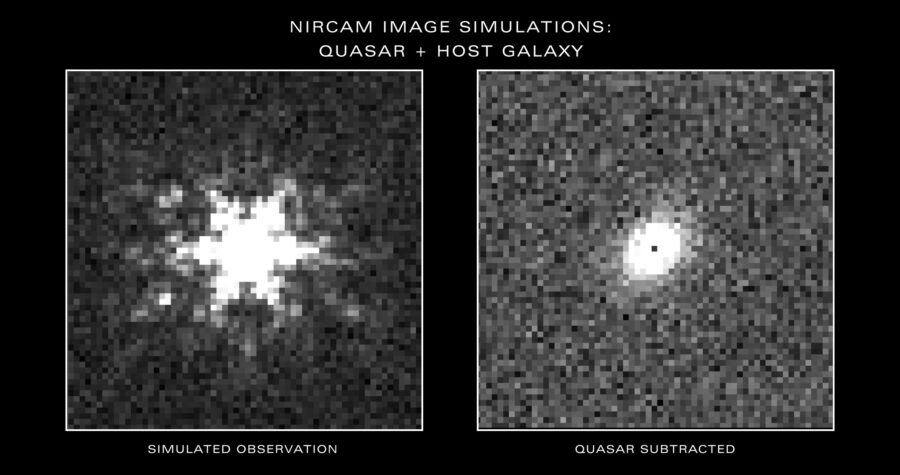
NASA / ESA / CSA / J. Olmsted / STScI
Webb carries the following instruments:
- Near-Infrared Spectrograph (NIRSpec): Designed by the European Space Agency (ESA) with contributions by NASA, NIRSpec will enable astronomers to see the light of the very first stars and galaxies.
- Near-Infrared Camera (NIRCam): NIRCam has a built-in coronagraph, enabling it to block the light from host stars to image nearby exoplanets. It will also image the earliest stars and galaxies as well as young stars in the Milky Way.
- Mid-Infrared Instrument (MIRI): Similar to NIRCam, MIRI will work at longer, mid-infrared wavelengths.
- Near-Infrared Imager Slitless Spectrograph (NIRISS): Built by the Canadian Space Agency, NIRISS will observe wavelengths from 0.8 to 5.0 microns, performing wide-field slitless spectroscopy along with aperture masking interferometry.
"This is a very intricate mission, on which a large number of people have worked very hard for decades," says Livio. "I can only hope that both the launch and the telescope itself will work as expected. The feeling is somewhat similar to the one I had when my children were born."
Post-launch Timeline
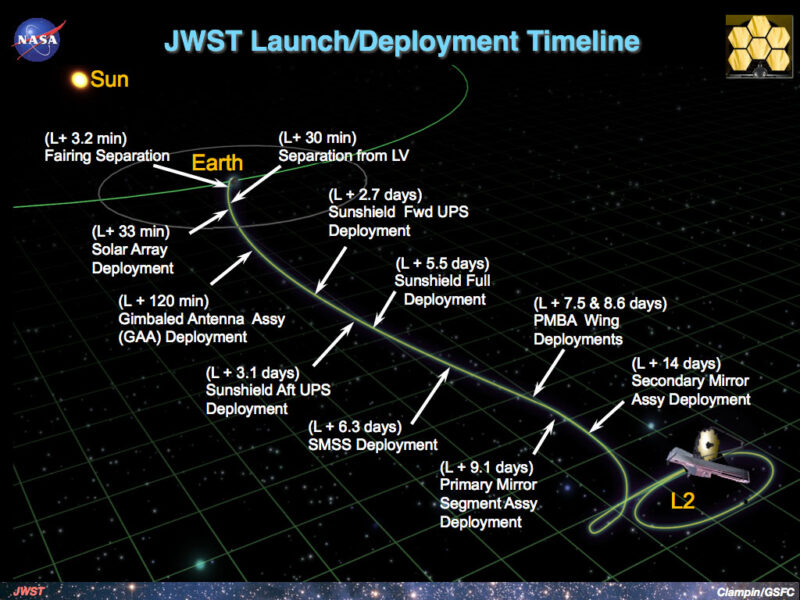
Some astronomers have already had observing proposals approved, but before science observations can begin, Webb must reach its final orbit, its sunshield must unfold, and instruments must come online and be calibrated. The telescope will reach its final orbit just over two weeks after launch; commissioning will continue for six months post-launch. Expect to see first light images from JWST in early 2022.
"The Webb launch is the epitome of real rocket science, and so I am of course nervous," says Hammel. "There are back-up plans, and back-up plans for the back-up plans. We are ready for Webb to fly!"
Watch the launch live next week: NASA TV will begin live coverage on Friday, December 24th at 6:00 AM EST/11:00 Universal Time (UT).
 10
10









Comments
David-Wickholm
December 16, 2021 at 9:44 am
Hmmm, "L2 Sun-Earth Lagrange point almost 700 million miles beyond the orbit of the Moon" puts Webb beyond the orbit of Jupiter. I believe L2 is slightly less than 1 million miles.
Dave
You must be logged in to post a comment.
dblighwv
December 17, 2021 at 6:54 pm
Repeat after me: "700 thousand." Not 700 million. English as a second language?
You must be logged in to post a comment.
John Crawford
December 17, 2021 at 8:13 pm
Also, travel time for light over 700,000 mi- one way- is 3.76s, much less than the time to Jupiter, and surprisingly short.
You must be logged in to post a comment.
rulesfor
December 17, 2021 at 2:16 pm
"...100 times more powerful than the 2.4-meter Hubble."
Can someone please help me understand where this number comes from, and what exactly it means?
You must be logged in to post a comment.
MikeSakarias
December 17, 2021 at 6:10 pm
General interest articles about the JWST all seem to use the same wording, saying that the JWST is "a telescope 100 times more powerful than the Hubble."
Can anyone answer what adds up to the "100 times more powerful" claim, repeated in this article, beyond the simple effective mirror size difference? NASA (who doesn't appear to make mention of "100 times more powerful") says the JWST has a 6.25X larger collecting area.
Mike
You must be logged in to post a comment.
Monica Young
December 17, 2021 at 8:40 pm
Webb has 100 times the sensitivity to light compared to Hubble. See e.g., https://www.esa.int/ESA_Multimedia/Images/2021/06/Comparing_Webb_and_Hubble
You must be logged in to post a comment.
MikeSakarias
December 17, 2021 at 10:32 pm
Thank you. I get it now. Interesting that the website you refer too still does not exactly explain. But, I gather that the combination of the larger mirror and the instrumentation specifically aimed at Infrared allows the JWST to be 100x more sensitive to infrared than the Hubble is at those wavelengths. It not just the larger mirror. The JWST observing where Hubble is most sensitive might not be 100x more sensitive. The simplistic "100x more powerful," smooshes together the specifics of light wavelength sensitivity and resolution, was too vague for me.
Mike
You must be logged in to post a comment.
Monica Young
December 20, 2021 at 2:10 pm
Yeah, I understand! It's complex because there are multiple factors that affect sensitivity. In addition to having larger collecting area, Webb will be at L2, and will thus be colder than Hubble ever could be. The detectors (their design and efficiency) doubtless come into play, too.
You must be logged in to post a comment.
Jks
December 17, 2021 at 8:58 pm
11 billion is bigger than the annual budget of very many Indian states & that's one biggggg part but that pales in comparison to the amount of planning and the amount of time scientists have given to this baby called James webb telescope which God willing if everything goes right would try out to be the tool that would script a brand new chapter into the world of modern Astronomy.... My wishes and prayers for it's flawless launch.... GOD BLESS US ALL BY HELPING US LAUNCH JAMES WEBB SUCCESSFULLY
You must be logged in to post a comment.
Robert-Casey
December 24, 2021 at 3:21 pm
All I want for Christmas is a fully functional JWST. Hoping it works well.
You must be logged in to post a comment.
You must be logged in to post a comment.